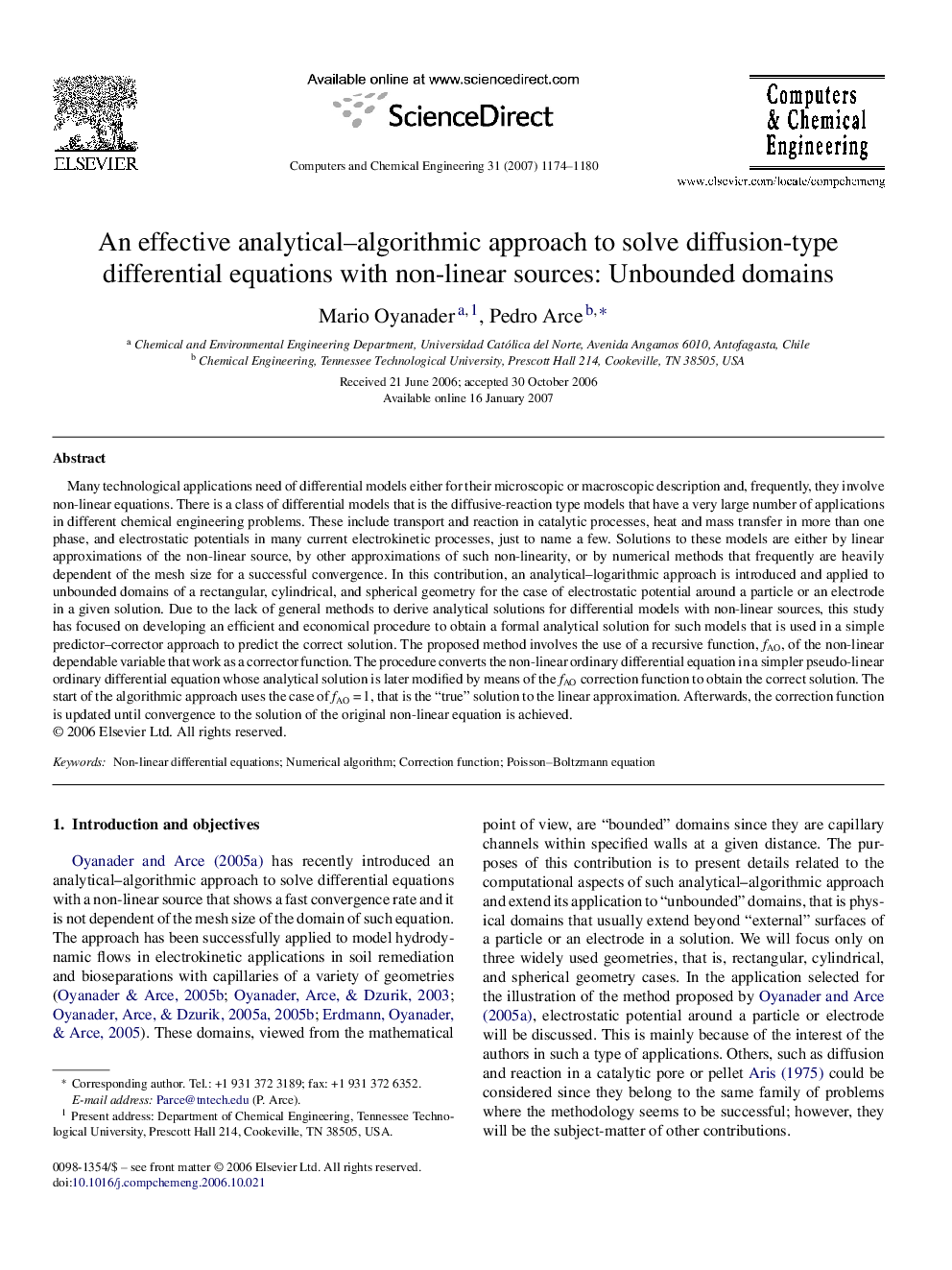| کد مقاله | کد نشریه | سال انتشار | مقاله انگلیسی | نسخه تمام متن |
|---|---|---|---|---|
| 173759 | 458609 | 2007 | 7 صفحه PDF | دانلود رایگان |

Many technological applications need of differential models either for their microscopic or macroscopic description and, frequently, they involve non-linear equations. There is a class of differential models that is the diffusive-reaction type models that have a very large number of applications in different chemical engineering problems. These include transport and reaction in catalytic processes, heat and mass transfer in more than one phase, and electrostatic potentials in many current electrokinetic processes, just to name a few. Solutions to these models are either by linear approximations of the non-linear source, by other approximations of such non-linearity, or by numerical methods that frequently are heavily dependent of the mesh size for a successful convergence. In this contribution, an analytical–logarithmic approach is introduced and applied to unbounded domains of a rectangular, cylindrical, and spherical geometry for the case of electrostatic potential around a particle or an electrode in a given solution. Due to the lack of general methods to derive analytical solutions for differential models with non-linear sources, this study has focused on developing an efficient and economical procedure to obtain a formal analytical solution for such models that is used in a simple predictor–corrector approach to predict the correct solution. The proposed method involves the use of a recursive function, fAO, of the non-linear dependable variable that work as a corrector function. The procedure converts the non-linear ordinary differential equation in a simpler pseudo-linear ordinary differential equation whose analytical solution is later modified by means of the fAO correction function to obtain the correct solution. The start of the algorithmic approach uses the case of fAO = 1, that is the “true” solution to the linear approximation. Afterwards, the correction function is updated until convergence to the solution of the original non-linear equation is achieved.
Journal: Computers & Chemical Engineering - Volume 31, Issue 9, September 2007, Pages 1174–1180